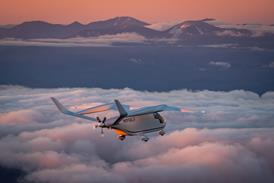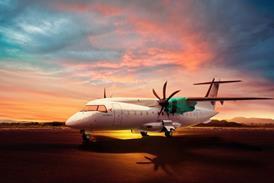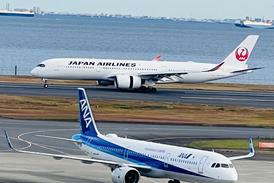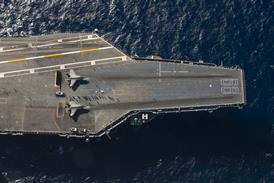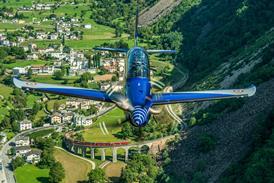Guy Norris/LOS ANGELES
A MAJOR UPGRADE OF front-line fighter radar with active-radar arrays is being evaluated by the US Air Force. A prototype system could be ready for tests by 1998.
Initial contracts have been issued to Hughes and Westinghouse under the radar-system aperture-technology effort being managed through the USAF Wright Laboratories, Ohio.
The one-year contracts, although relatively small at $500,000 each, cover requirements definition in phase one and are expected to lead to a much larger, $4.4 million, two-year second-phase contract.
Although neither company will comment directly on the programme, it is believed that a demonstration effort would be conducted with a McDonnell Douglas F-15, if Hughes is successful, or a Lockheed Martin F-16, if Westinghouse is selected.
In the case of the F-15, the planar antenna on the aircraft's Hughes-built APG-70 radar would be replaced by a Hughes active array, based on the company's Continuous Transverse Stub antenna technology. The array would be populated by transmit/receive (T/R) modules of the type being made at the joint Hughes/Delco Electronics HE Microwave site in Tucson, Arizona.
The Westinghouse effort is largely based on technology being developed jointly with Texas Instruments for the Lockheed Martin/Boeing F-22 APG-77 radar. The joint venture delivered the first receive-only active-array radar in July to Boeing for F-22 radome tests and was expected to deliver the first development antenna with T/R modules by the beginning of January 1996. The Westinghouse programme will involve replacing the APG-68 planar antenna with the experimental active array.
The USAF is considering the move to improve radar performance and reliability. As the T/Rs, at the heart of the active array contain a power amplifier for transmission as well as a low-noise pre-amplifier for reception, the active-array radar does not require the standard high-power radar transmitter.
In addition, by replacing the mechanically gimballed planar antenna with the flat-face active array, the aperture area is increased, improving multi-mode and fire control performance.
Flight-testing has been completed on a prototype multi-mode radar processor for the Hughes advanced synthetic-aperture-radar system (ASARS-2) used in the Lockheed Martin U-2. The compact i860-based processor is compatible with the current operational ASARS-2 ground-based processor, which is used to receive downloaded reconnaissance imagery.
The flight-demonstration programme was completed one week early after only three of the four planned test flights were successfully undertaken, says Hughes. Commercial off-the-shelf hardware and synthetic-aperture technology used in the system "...enabled us to produce a 95lb [43kg] airborne unit that functionally replaces a system that previously required large, ground- based, processors tethered to the aircraft by wide-bandwidth data-links".
Hughes says that the system "...is proposed as the basis for an Air Force radar-improvement programme", which will improve target-location accuracy deeper within enemy territory. The programme, also includes increasing resolution and coverage of existing imagery modes, the ability to provide ASARS-2 derived digital-terrain maps to the user, and adding a "very robust" moving-target-indication capability.
If the USAF selects the upgrade for the U-2 fleet, every aircraft could be fully retrofitted by the turn of the century. "The new processor could be integrated into the fleet even sooner, however, and the first unit could be deployed in as little as 30 days, if needed," says Hughes.
Source: Flight International

